Coming home from a tour of English gardens I felt a short, sharp shock. Everything in my garden looked inadequate, not up to the standard I had come to expect. I moped. I complained. Why can’t I grow the hundreds of plants I saw and admired? Some of them must surely suit my climate. So why don’t the garden centres around Glen Villa stock them?
Then I faced the facts. My garden will never match the perfection of an English estate that employs six or seven full time gardeners. The garden centres will never stock the rarities — with such a small market, it’s not a paying proposition. Plants I grow will never match the size they reach in England, not as long as I live where I do, where winter temperatures drop regularly to -25 or -30C.
And since I have no desire to live anywhere else, I had to quit complaining. I gave myself a good talking to. Instead of accepting your limitations, I told myself, embrace them. And I have. I do. My garden no longer looks inadequate, it looks splendid. I am enthusiastic about what I can grow, and even more enthusiastic about what grows here naturally.
I mean, just look at it. Can any English country scene be more beautiful than our old farm field bursting with buttercups?

The Upper Field at Glen Villa is a what dieticians argue against, butter spread thick on the ground.
And what about the lupins that are dancing their way across the meadow? I’m happy to see them, and to see this year for the first time a brighter-than-average pink that I hope will spread and become even brighter.
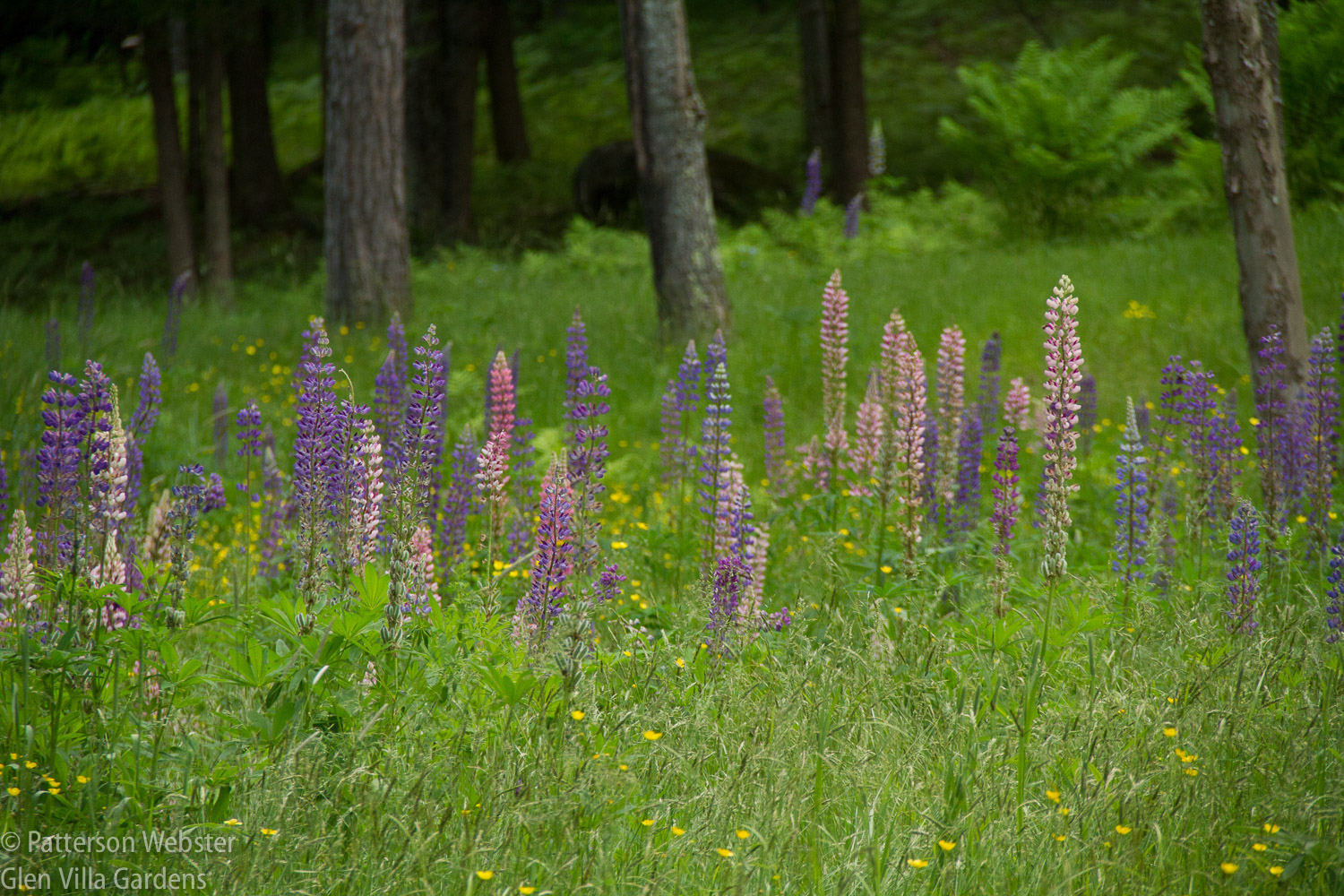
One source says that lupins are meant to take nourishment from soil, to wolf it down, as it were, thus explaining their name.
My heart sings when I see the lupins blooming amid buttercups and ragged robin, especially when set off by the citrus green of Aralia ‘Sun King’ behind them.
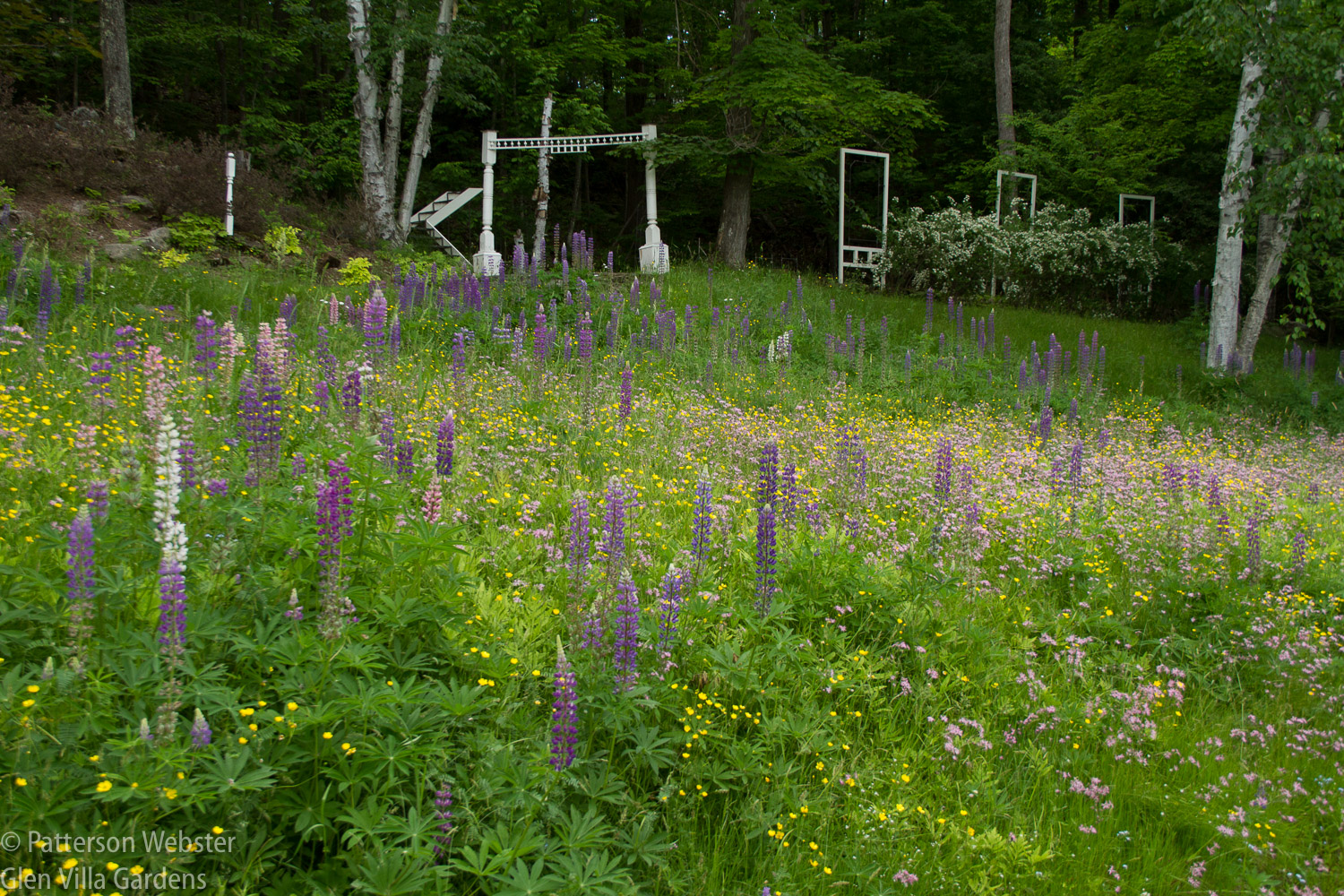
The white posts mark the entry to the China Terrace. To their right are white window frames and a cascade of spirea.
I take no credit for these wildflowers. Each year they appear on their own, this year more floriferous than last. The shrub border in the Upper Field is a different matter, and it gives me pleasure of a different sort. I chose the shrubs and thanks to the fence I designed to protect them from the deer, they are blooming like they’ve never bloomed before.

Viburnum sargemtii ‘Onondaga’ is standing tall. The citrus-coloured shrub is Ninebark (Physocarpus opulifolius) ‘Golden Nugget.’
The shrub border is doing all I hoped it would, and more. I wanted some privacy in the Upper Field, and the shrubs are big enough now to shield our view of cars driving past. I wanted the privacy screen to be truly appealing, so I’d walk up the hill to see it. And that has worked. The vibrant blossoms and foliage add colour and excitement, and draw me like a magnet to see how each plant changes, day to day.
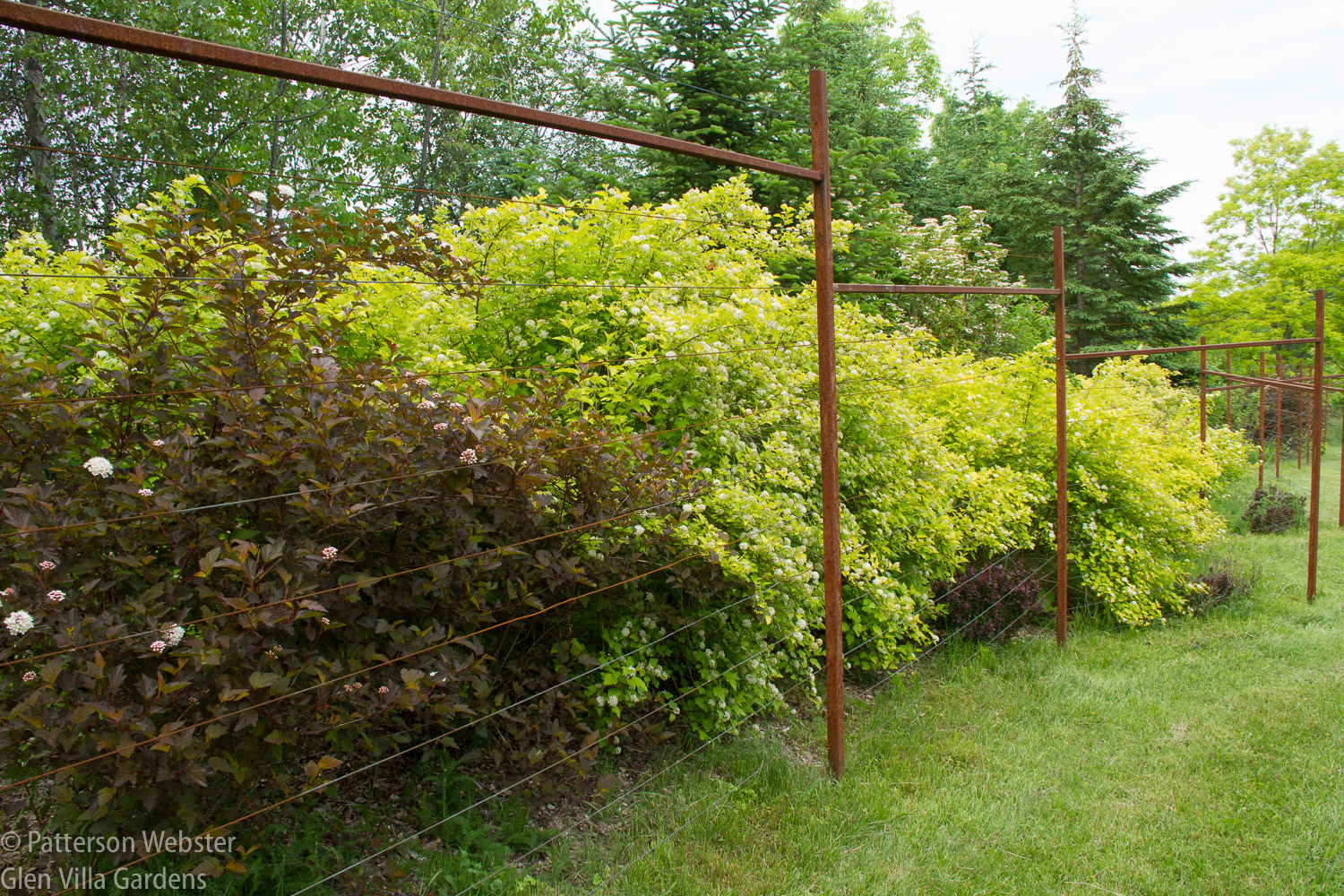
Another view shows a different ninebark in the foreground, Physocarpus opulifolius ‘Coppertina.’ I like how the hint of green in its leaves picks up the citrus of the ‘Golden Nugget’ beside it.
The blossoms on the Ninebark ‘Coppertina’ for instance. They start as tight pin pricks, then open to resemble tiny berries, then become as fluffy as dandelion heads, all in a matter of a week or two.
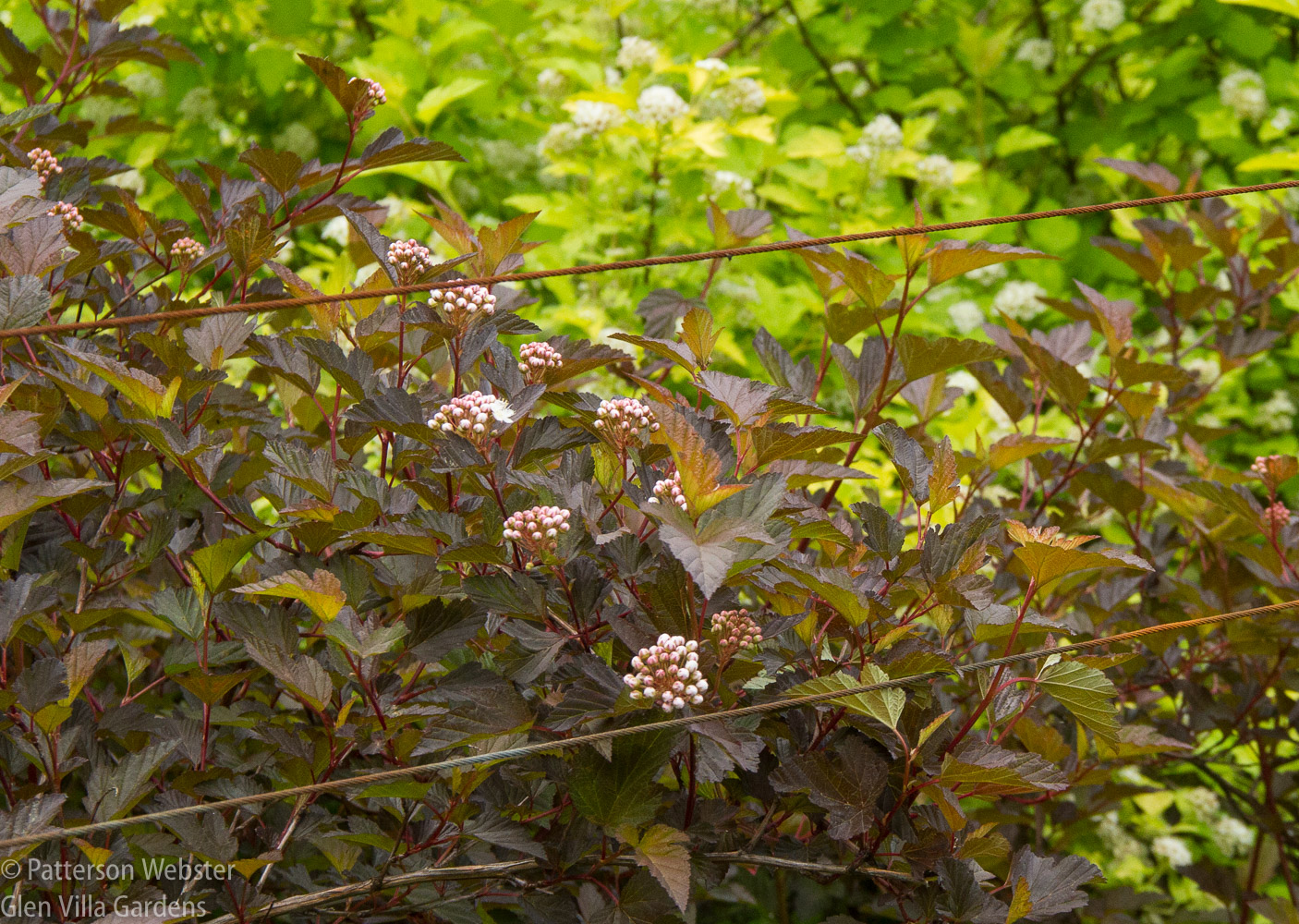
The blossoms here are at the berry stage. They are more open now than when I took this photo.
All around the garden, blooms are bursting. At the Skating Pond the yellow flag iris are shining in the distance …
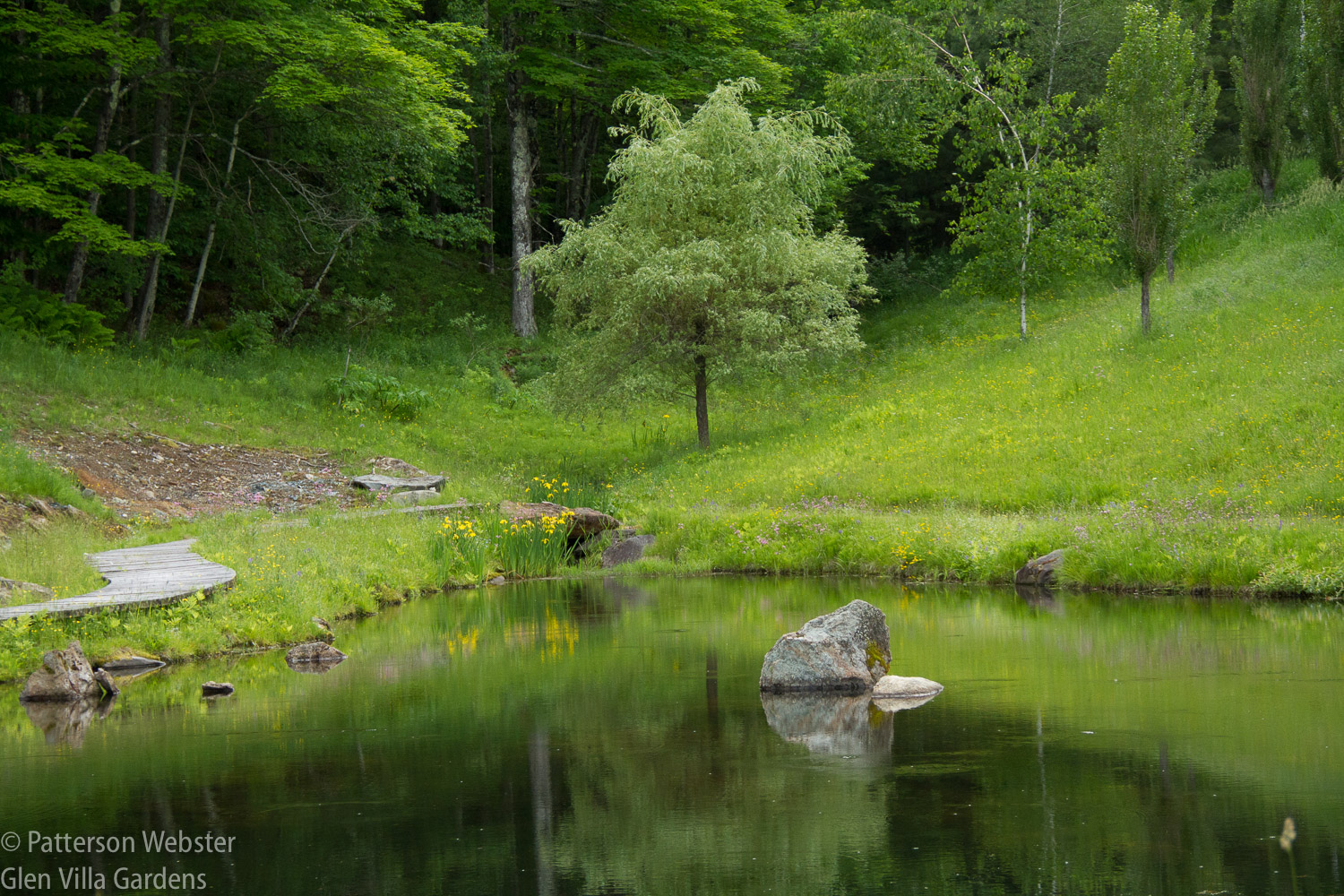
The bare patch of ground to the left of the iris needs attention. Next week, perhaps.
… elsewhere, single white peonies gleam …
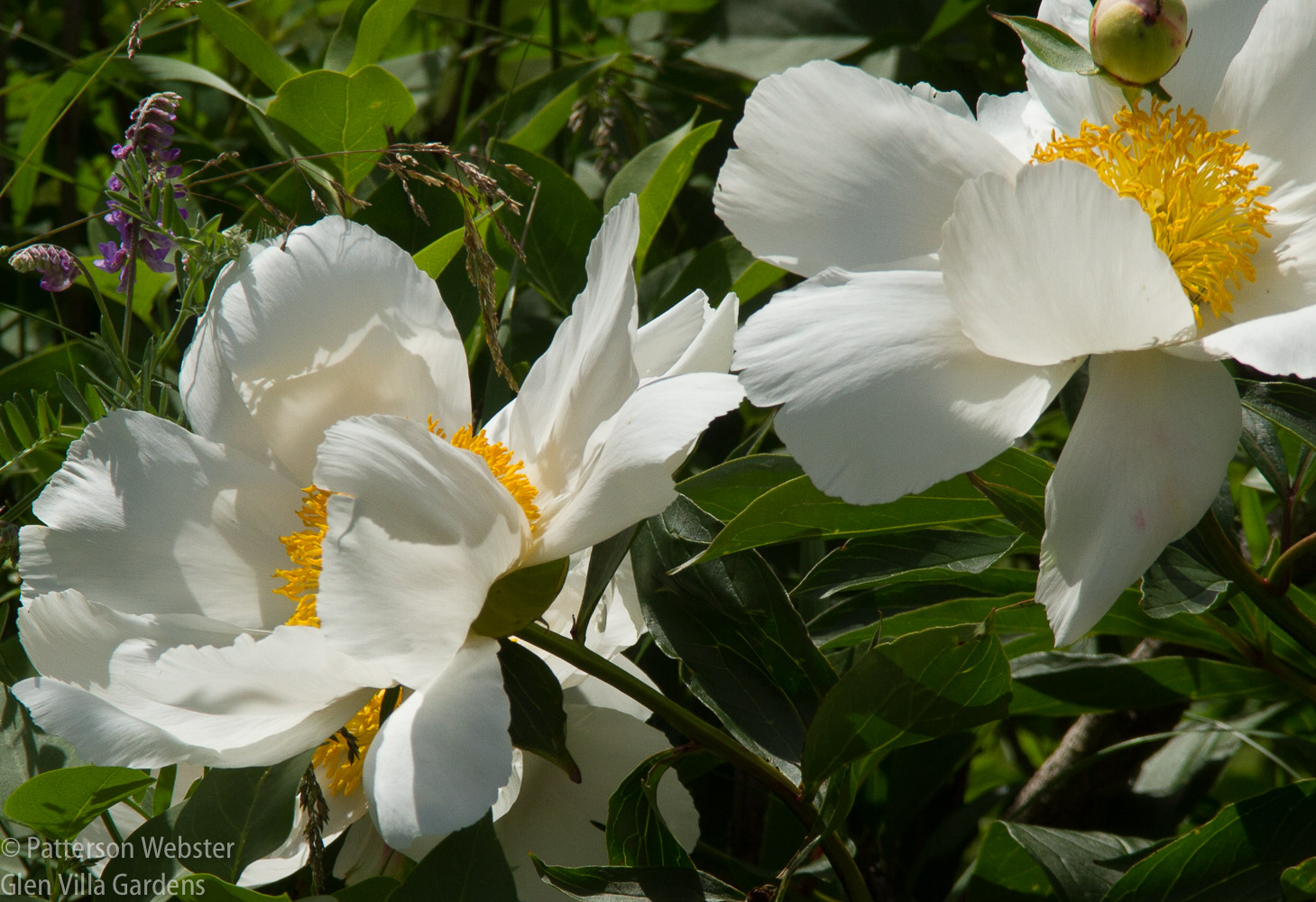
Blowsy peonies… I love them!
… and camassias growing more abundant year by year.
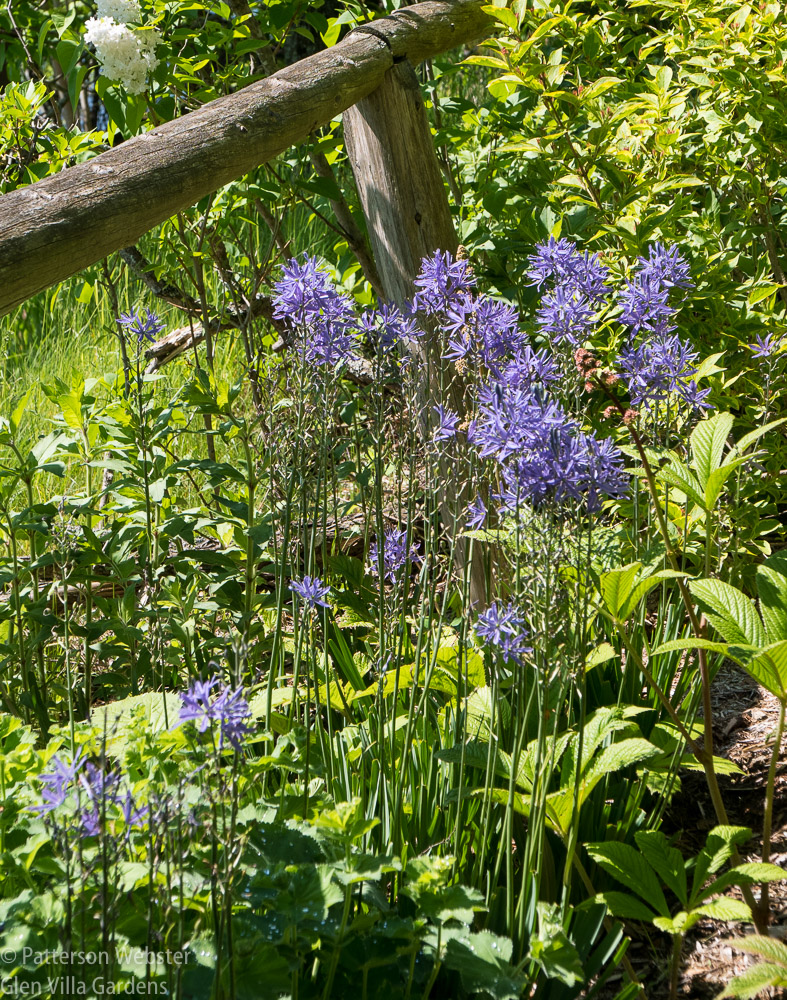
I’m not sure which variety of camassia these are. Can anyone identify them? According to my planting notes, they should be either Blue Melody or C. caerulea. I’d like to order more and want the same variety.
Seeds I gathered from an acquilegia in Australia are blooming quietly on a rocky outcrop, retaining their original colour and refusing, I’m glad to say, to affect the colour of the wild Canadian ones that grow nearby.
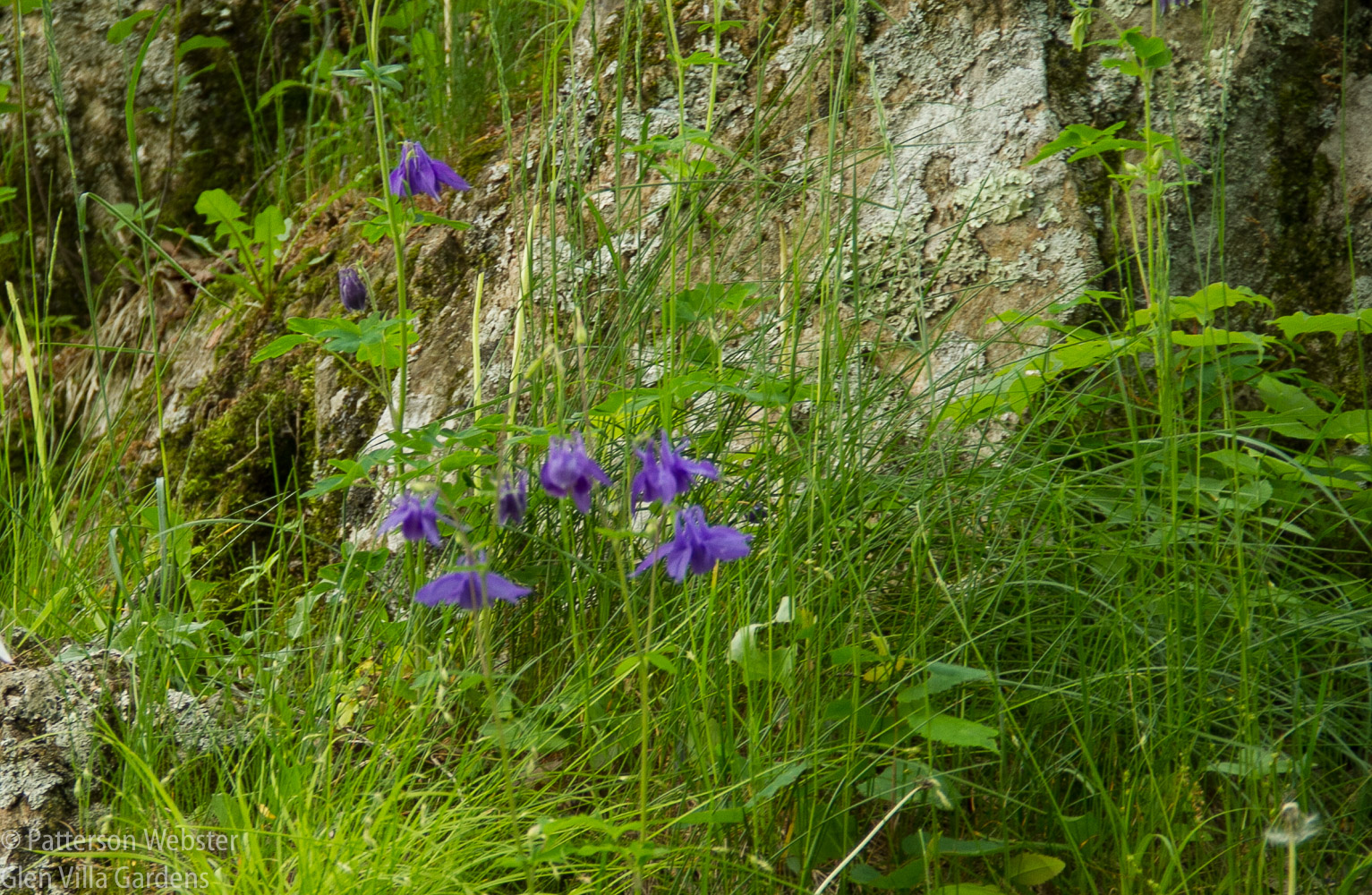
I feel nostalgic whenever these acquilegia bloom. They remind me of another place, and another time.
But the wildflowers capture my heart most of all. The yellow flower that is blooming in a field next to a tall grass…
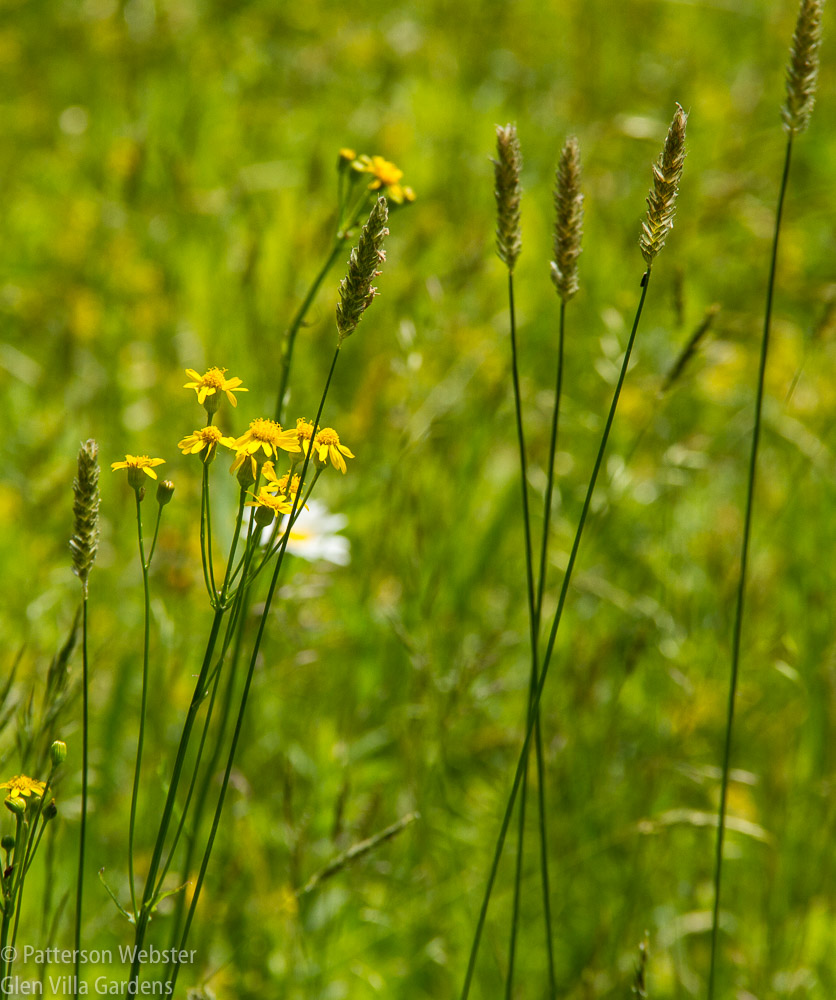
II haven’t tried to identify this yellow wildflower. Can you?
… the delicate pink daisy-like flowers that appear everywhere….
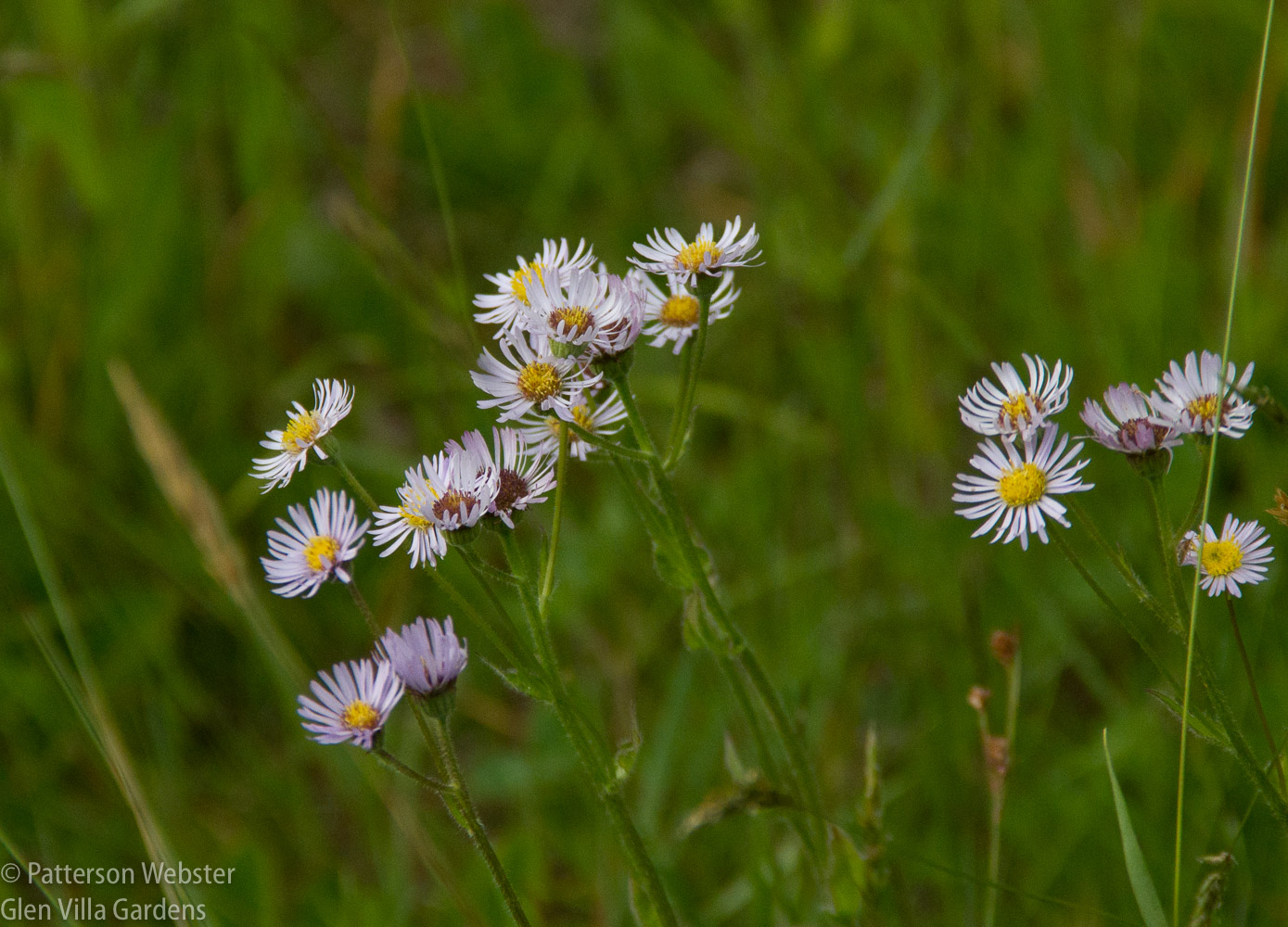
My granddaughter Vivienne took this photo. Thanks, Viv!
Why should I be envious of an English garden when I am surrounded by such natural beauty? Even the grass is glorious.
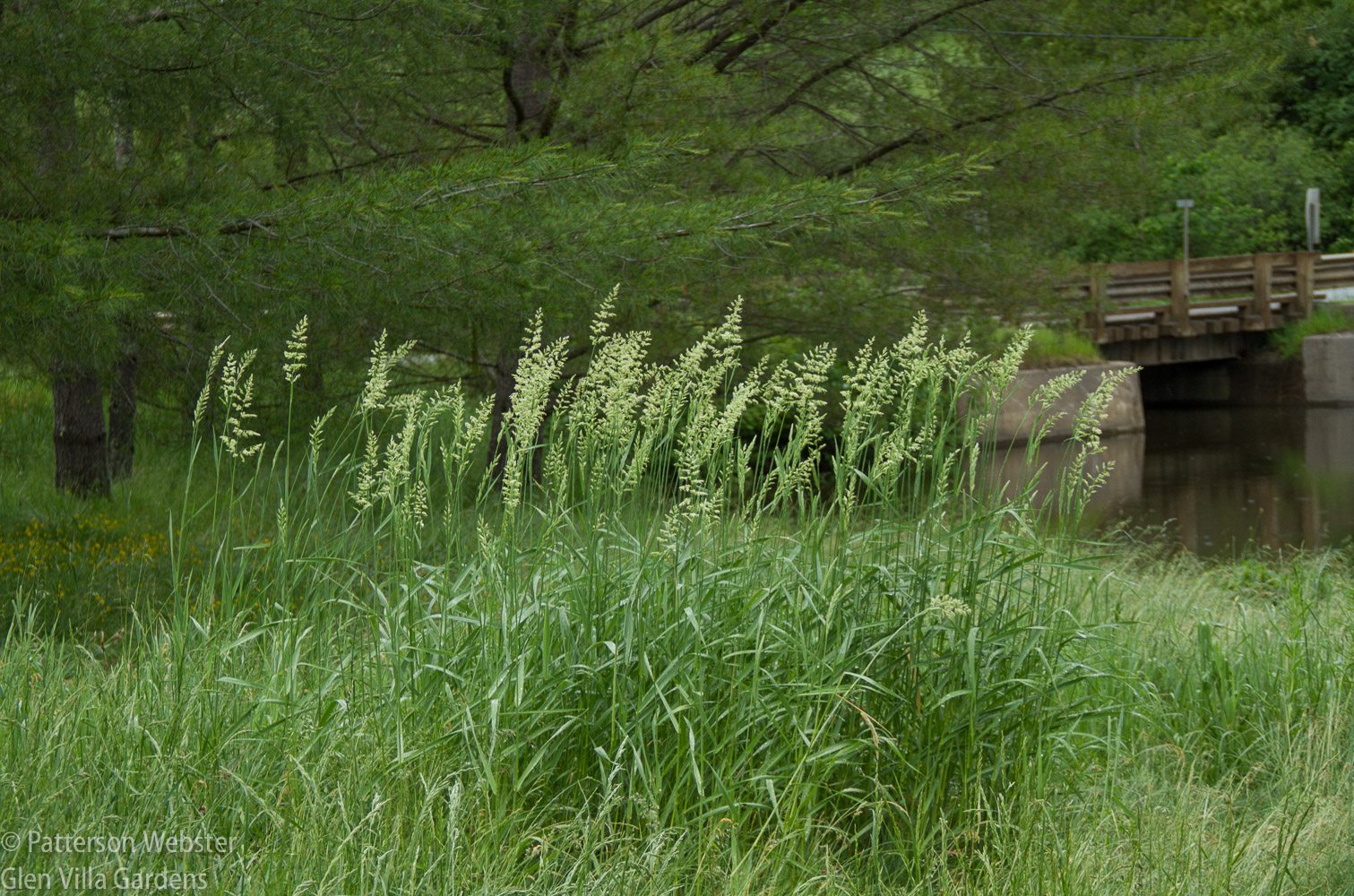
Can any manicured garden hold a candle to this?
Do you have garden envy? And are you doing anything about it?







Pat,
An English gardener and painter friend visited my garden in upstate NY a few summers ago and practically wept at the fallow fields full of wildflowers and grasses around my house. He couldn’t believe I had so many fields that could revert to wilderness and the many butterflies I had. I too have had the same feeling upon returning from European gardens but then I start to see our wildness here and the beauty of it. In Europe they try and create our wild meadow plantings. So little of their land is allowed to be fallow. Seems like every square inch is cultivated. We are lucky in that we can visit and admire and return to something they have lost!
I love the wildness, and agree — we are lucky to be able visit and admire, then return to our own wild meadows and fields. I’m glad I photographed the field when I did. We’ve had such hot days that the glory didn’t last long. And now, two days with cloudbursts have flattened everything. At least it is now cooler.
Morgans estate in Senneville grew all sorts of stuff from around the world. Back in the day when they had 15 gardeners, people from around the world would come and bring them plants to grow. I guess micro climate would be the word. I was forever asking Liz what everything was because I wasn’t sure if it was plant or weed one summer helping her out. Everything on the property being documented too she usually knew what it was, great fun. I what the History of the English Garden on PBS the other night, pretty good show but I always have a thing for English Gardens too! Looks like the season is off to a fine start…….
Did you know that the estate has been sold? I was meant to visit tomorrow but can’t, unfortunately. I’m going to try to get there later this month or next. Interesting that you worked there once — a multi-talented guy!
Liz is a good friend and I was doing a consulting job living in New Orleans and stopped into to see her after that deal was done and a wind storm hit while having cocktails. Well, it took out fifty trees on the property and then she said, “what are doing this summer,” and I said, “how about a little chain saw to start”? It was a wonderful summer working on the estate and l moved into the cabin on the lac on the property. That took care of the summer until another consulting job started in the fall. Property has an amazing history of gardens etc., everything documented.
Good story, Robert.
Ironically, that buttercup isn’t native to North America. It may be native to the country you just left! Many of our wildflowers are European imports that came over with our immigrant ancestors. But I have read that visitors from Britain are quite envious of our sumacs, goldenrods, and asters, among others. I like to watch BBC Gardener’s World on Youtube and I have read several of Monty Don’s books, and one thing I do envy is the British sense of time, as in when Monty calls a hundred-year-old garden “young.” His own land has been cultivated since the Middle Ages, I believe. And hedges and the structure they impart seem to be much more a part of their cultural milieu. I would like to impose more structure on my garden but I haven’t quite figured out how to do it yet. ‘Blue Melody’ had variegated foliage, so I think you have Camassia caerulea there. The yellow flower might be Packera aurea. The daisy flower might be daisy fleabane or some other erigeron. When you can only see the flower and not the leaves or overall structure, it’s hard to make a definitive diagnosis. But it’s nice to have a starting point for an online search.
I didn’t know that about the buttercup.. interesting piece of information. And yes, the sense of time is a major component in many English gardens. One I visited recently had been so renovated that it had lost its roots and felt hollowed out. You are right about the Camassia — I looked it up last night and discovered the variegated foliage. And the pink one must be a type of fleabane. I’ll look up Packera aurea and try to remember that name for the future.
(I do get history envy. We’re 200 years identifiable but houses older than ours always make me ache..)
I’m not sure how I’d make a garden on a piece of land that has little or no history. A suburban plot, for instance. Yes, I know something was there once upon a time but when so much is erased, it is hard to find a root, or a route, to travel along.
Every inch of land has history – the big challenge would be discovering it!
Pat, you never, ever need to feel garden envy. Your magnificent gardens inspire it in me. And I’m grateful for your advice to go (with passion) with what one has. One has to accept soil conditions and amount of sunlight as well as weather. And one has to be extremely patient. I only have reluctant Lupine, for example. But my Columbine thrives. Trying to create a garden from another climate…especially England’s…is nuts! Rather than alter my substantial borders, I accept what they have to offer but I do spend a lot of time on my 22 urns, in which I can be as creative and colorful and controlling as I want. One is always limited by what is available in the nurseries. There is not much that is exotic but one can put together vivid, diverse “canvases”. It’s also not easy to find attractive urns. One has to search. But you are inspiring.
Thank you, Eve. Twenty-two urns: wow! I am planting fewer and fewer pots each year. Although after trying for two years without much success to make a tiny boxwood hedge in two raised planting boxes, I’ve gone back to annuals. Once they are a bit larger, I’ll post a photo. I’m quite pleased with the colour combination.
And I envy your peonies!
BTW, the concrete poet show at the Getty brought back fond memories of IHF and Little Sparta.
All best, Dennee
The peonies are gorgeous now, or were before the rain beat them into the ground. Yes, always good memories of IHF and LS. I’m working on a project now using corrugated tin — IHF gave me the idea. I hope to finish it by September. Tentatively titled The Past Looms Large, part of the Temple Walk.
I love the lupins! And the single white peonies are wonderful. I honestly think you have no cause to be jealous of anyone’s garden.
I agree, the lupins are fabulous. I only wish they weren’t so unattractive as they go to seed. We let the grass grow up around them to disguise that but it is only moderately successful.
Hope the Fling is going well. Wish I could have joined in.
June is a great time to fall in love again with your northern garden!
I agree! July and August aren’t bad times, either.